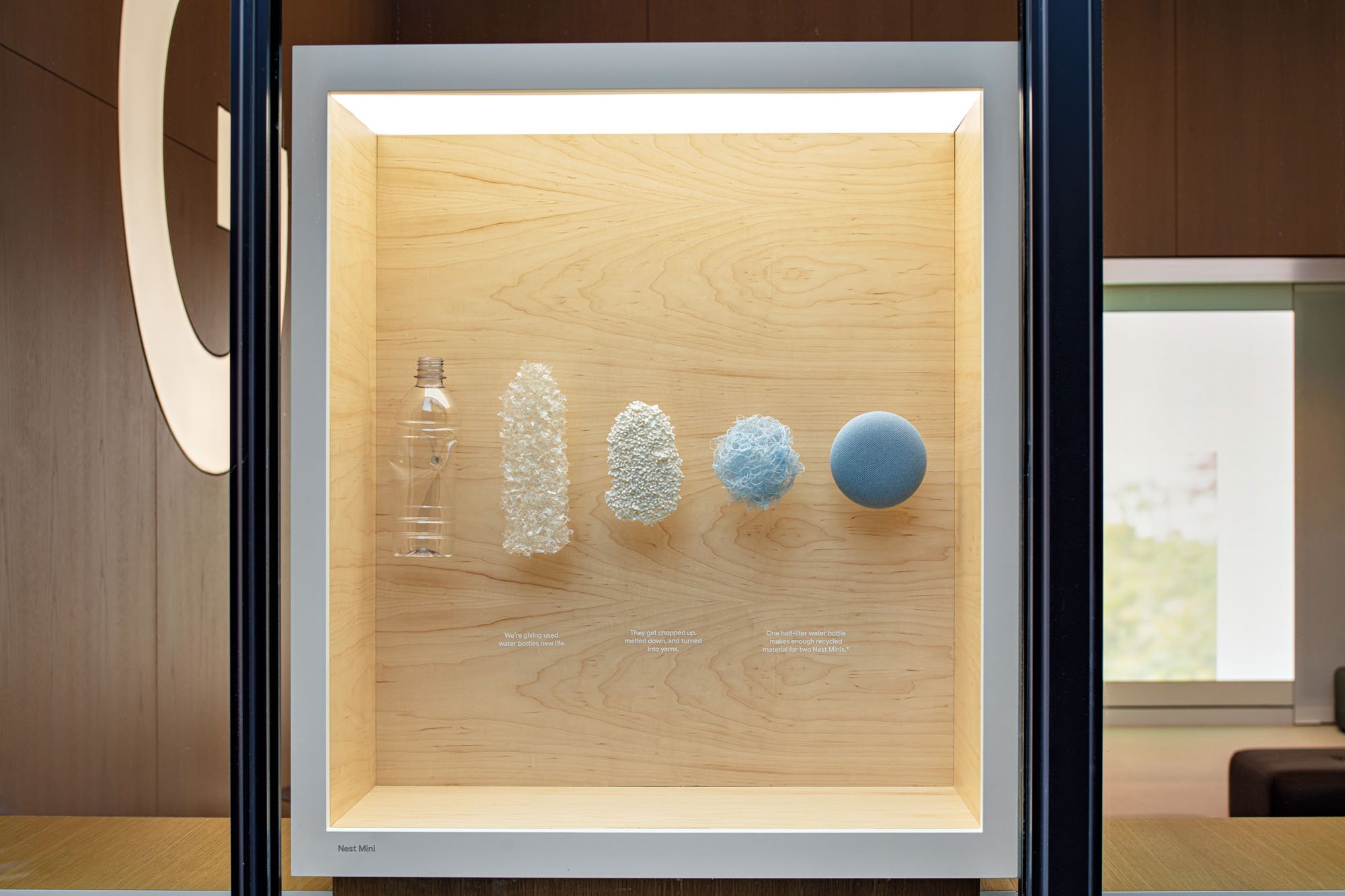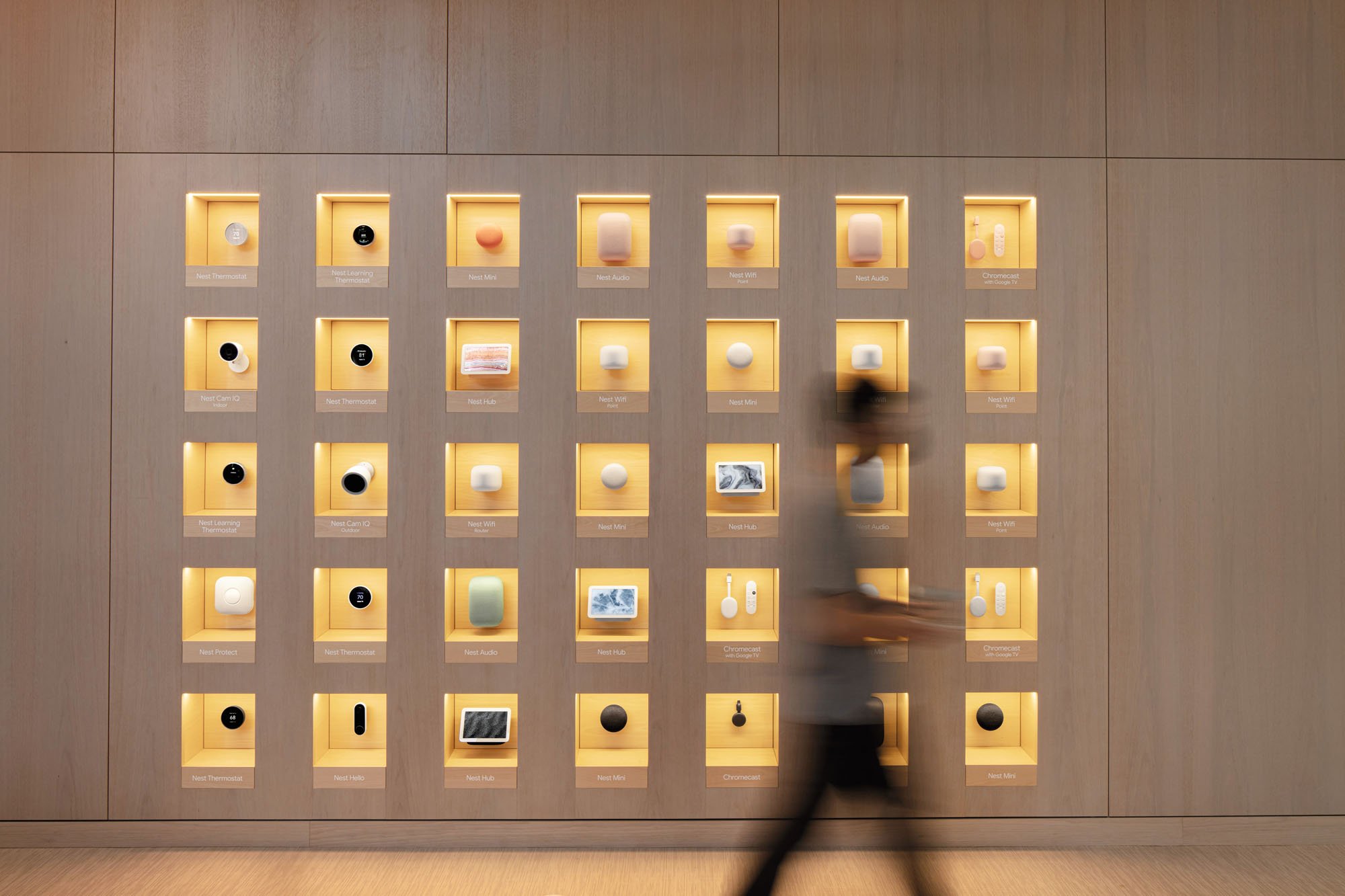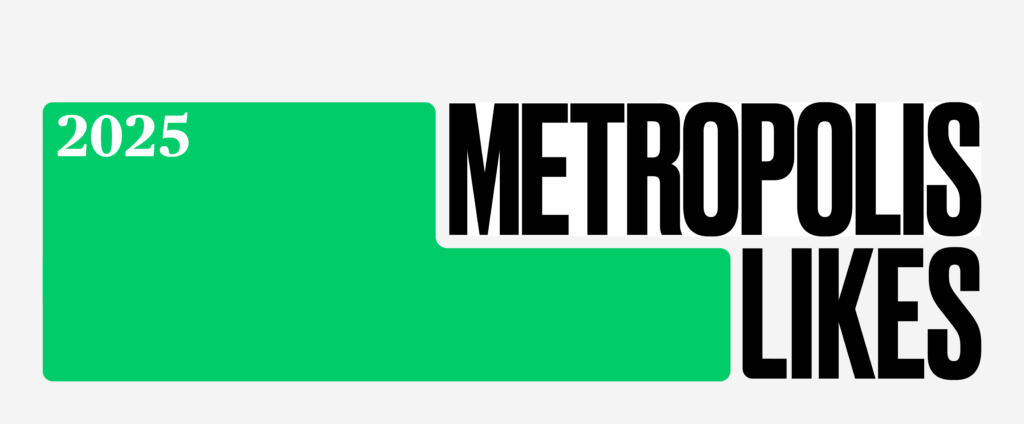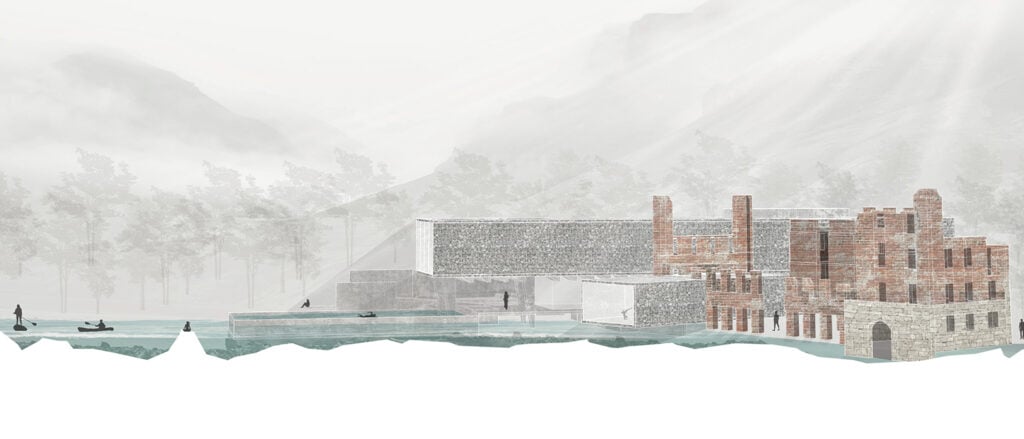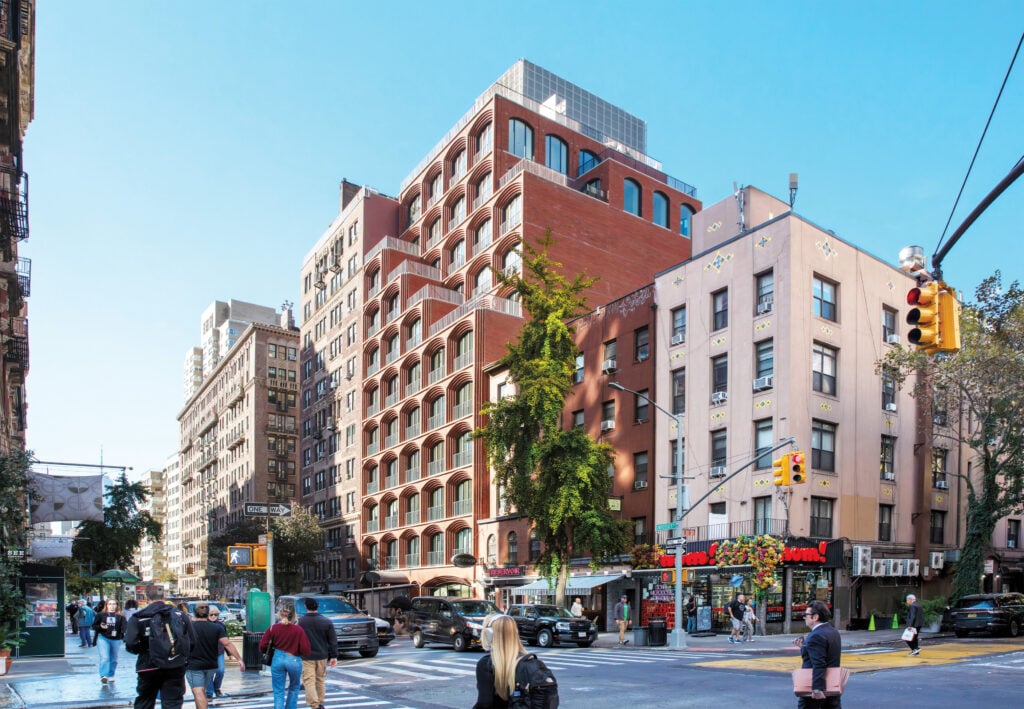
November 17, 2021
With its First Brick-and-Mortar Store, Google Sets the Bar for Ecoconscious Retail
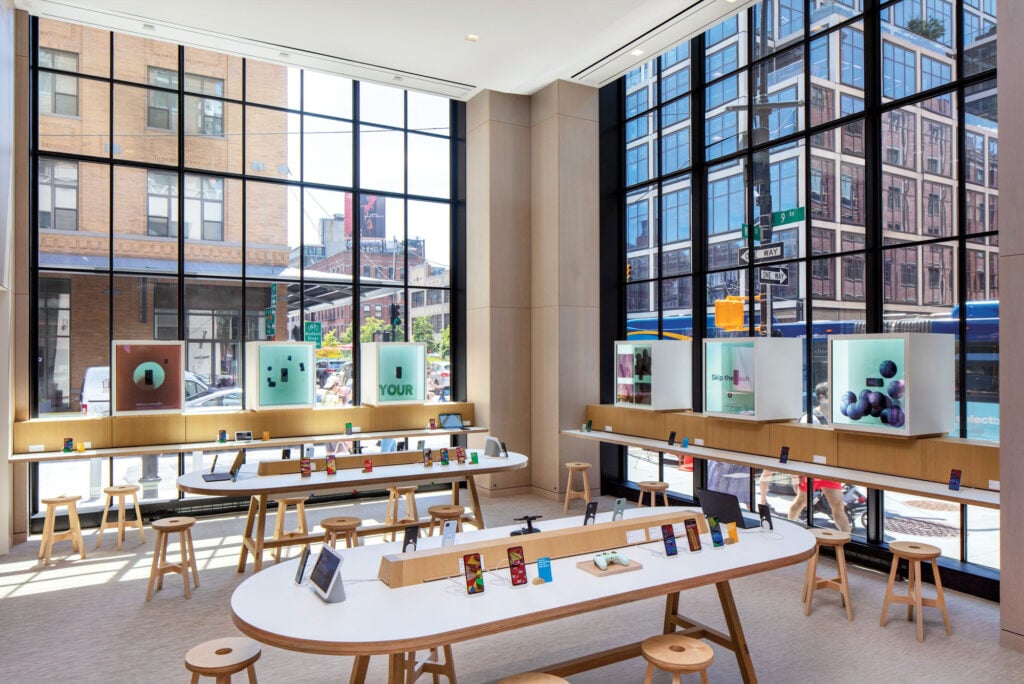
The airy main storefront is a showcase of Google’s latest tech offerings, including smartphones, tablets, Chromebooks, and more.

A sinuous metal line weaves its way through the space defining areas within the space while keeping sight lines open. The intention is to simultaneously provide wayfinding for shoppers looking for a particular family of products and encourage free exploration. Cork furniture made by Brooklyn product designer Daniel Michalik adds a touch of texture to the store.
Getting to LEED Platinum required careful planning and tenacity from Suchi Reddy, founder of the celebrated New York City–based studio Reddymade Architecture and Design, which designed the store for Google. “We carefully calibrated our decisions at every stage,” explains Reddy, who first worked with Ross for Google’s installation at the 2019 Salone del Mobile. Working through the pandemic, Ross and Reddy considered every detail of the space through the lens of sustainability.
With guidance from green building consultancy Steven Winter Associates, Reddy sourced responsibly harvested hickory for the walls, energy-efficient lighting, and Bolon flooring made from recycled plastic bottles. The designers also configured a plumbing system that reduces indoor water usage by 50 percent, and enhances indoor air quality throughout the store with low-emission materials and ongoing air monitoring. Even the two LEED Platinum plaques are made from recycled material from Google’s mobile phones.
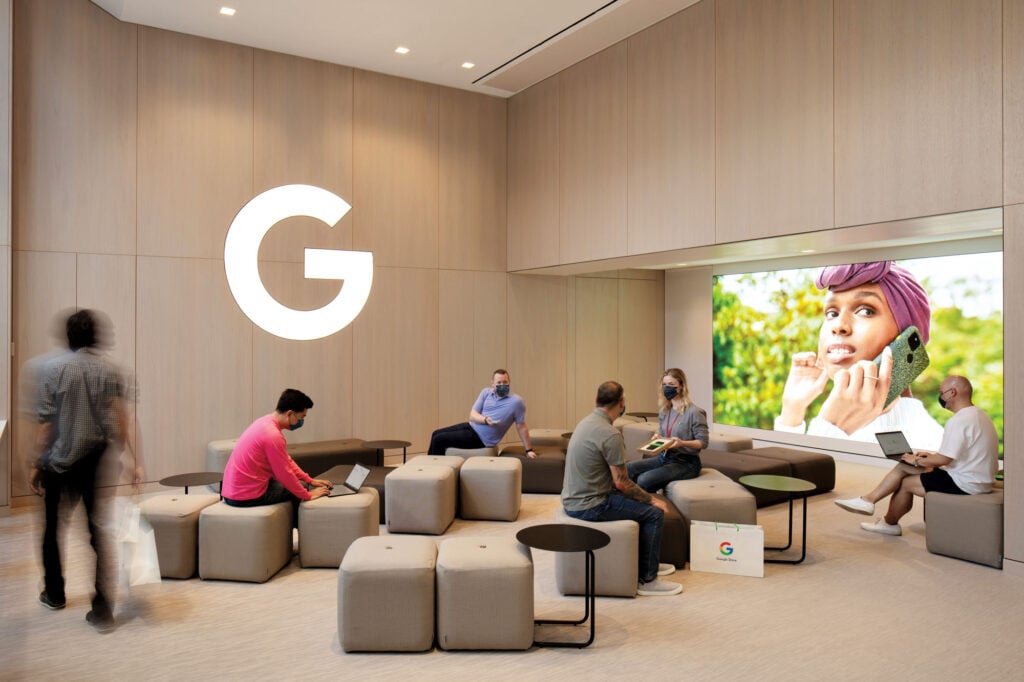
Google opened its first-ever retail store this summer in New York City’s Chelsea neighborhood; the relatively small shop earned LEED Platinum for energy and water efficiency as well as the use of recycled materials. Developing a physical location mirrors the technology behemoth’s recent emphasis on physical products like smartphones, wearables, and home technology.
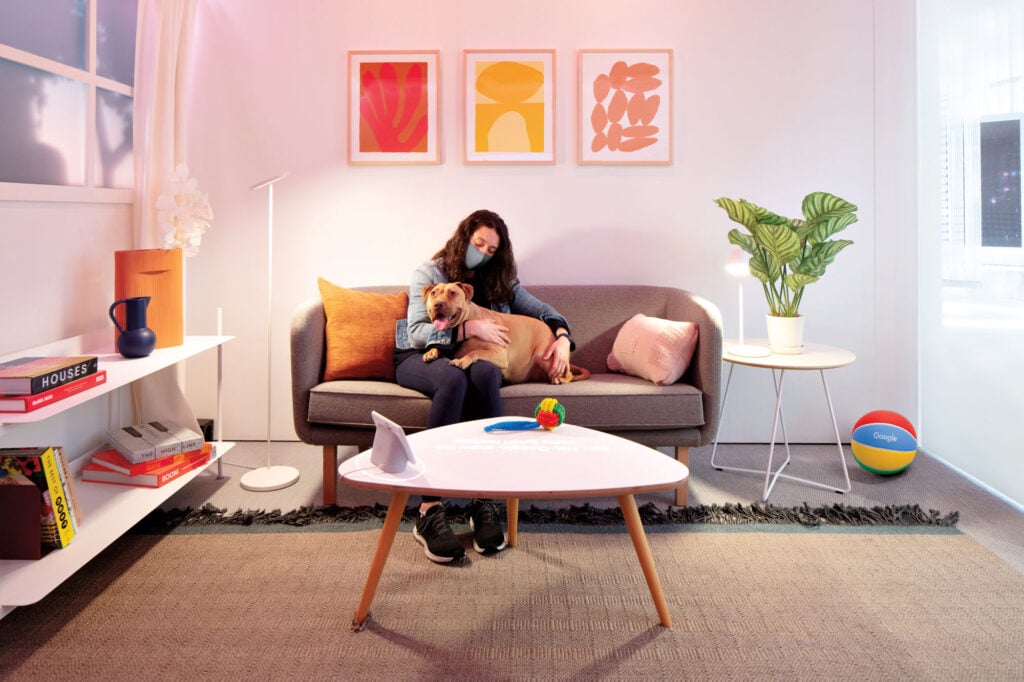
Dubbed the “Workshop,” a small multifunctional space is designed to host product demonstrations, screenings, and activities for Google fans. Immersive product displays called “Sandboxes” allow customers to experience products like Google’s Nest line of smart home gadgets in a simulated residential environment.
The dogged obsession with reaching LEED Platinum mirrors Google’s attempts to curb its considerable carbon footprint, Ross explains. The hardware department that she oversees, in particular, has committed to using recycled or renewable materials in all its phones and home gadgets by next year, and the company is exploring ways to make products more durable, hopefully keeping more of them out of landfills. “For me, this store is no different than a product,” says Ross. “In the same way that we’re committed to making sustainable products, we were determined to meet LEED standards.”
Because retail environments are typically built on tight budgets and strict timelines, using healthier materials can seem like a luxury. But Reddy contends that any designer can inject green building strategies into their projects, even without the deep pockets of a client like Google. “It’s a lesson for everyone,” she says. “Maybe a decade ago this would’ve been very expensive to achieve. It isn’t anymore—it just requires a lot more thinking. It’s the attitude that makes the difference.”
Would you like to comment on this article? Send your thoughts to: [email protected]
Latest
Products
Discover the Winners of the METROPOLISLikes 2025 Awards
This year’s product releases at NeoCon and Design Days signal a transformation in interior design.
Profiles
These Architecture Students Explore the Healing Power of Water
Design projects centered on water promote wellness, celebrate infrastructure, and reconnect communities with their environment.
Projects
KPF Reimagines the Arch in a Quietly Bold New York Facade
The repetition of deceptively simple window bays on a Greenwich Village building conceals the deep attention to innovation, craft, and context.



